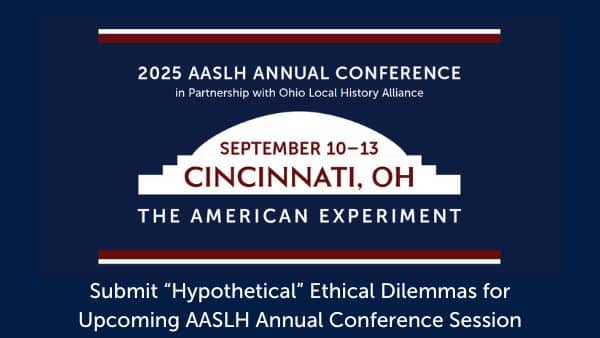 Thanks to a Small Museums scholarship, I attended the AASLH annual conference in Birmingham, Alabama. While there, I learned new and valuable ideas about operating small historic sites and museums.
Thanks to a Small Museums scholarship, I attended the AASLH annual conference in Birmingham, Alabama. While there, I learned new and valuable ideas about operating small historic sites and museums.
At the Small Museum Luncheon, speaker Sally Roesch Wagner, from the Matilda Josyln Gage Foundation, reminded me why I love working at a small historic site. She said that compared to larger institutions, small museums can fly under the radar, giving us greater freedom and flexibility.
Wagner pointed out why I, and perhaps many of us, enjoy working at a smaller institution. She challenged me to think about and create new and innovative ways to make more effective connections with my community.
At the Historic House Museum breakfast, the authors of The Anarchist Guide to Historic House Museums spoke about removing barriers to access at historic sites. This allows greater interaction between the spaces and the history. Their programs go behind the scenes, or occur among the objects in period rooms, to connect their audience with the place’s history.
This particular presentation resonated with me, as we are revamping Morris-Butler House, the historic site where I work. Indiana Landmarks, owner of the house, has used strategic planning to transition the building away from a traditional historic house museum with low visitation. It’s now a vibrant historic site that still tells the story of its past, but it’s more active and mission-oriented, with innovative programming, donor and member cultivation, and rental events.
As we continue this change, I plan to apply many of the ideas shared at the AASLH conference and develop new experiences for Morris-Butler House. Using these lessons, not only can I create programs to connect our audience with the site, I can foster their appreciation of the building and its history.
And I look forward to attending the AASLH conference next year!
Kelly Gascoine
Indiana Landmarks
Program Coordinator at Morris-Butler House



